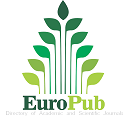Karakteristik Produksi Cacing Tanah (Lumbricus rubellus) dengan Pakan Limbah Pasar Berupa Sayur Sawi Hijau dan Pepaya
Abstract
Environmental pollution can be minimized by utilizing traditional market waste through the cultivation of earthworms. Market waste that is commonly found is vegetable and fruit waste. Market waste that is used as feed can minimize the production budget in worm farming. This research used a completely randomized method, four treatments and three replications. The aim of this study was to investigate the effect of feed with mustard green waste and papaya waste on the productivities (body weight and body length) of Lumbricus rubellus, vermicompost production, and that economic value. The results of the study stated that the treatment significantly (P<0.05) affected the parameters of worm body weight, worm body length, and vermicompost production. Papaya waste (P400) treatment produce the highest body weight of L. rubellus in 1.108 ± 0.128 g, body length in 9.367 ± 0.446 cm, and waste degradation in 45.62 %. The papaya waste showed the highest results in terms of body weight gain and body length of L. rubellus. The cultivation of earthworm can provide economic value for Rp 514.428,60/4 months by producing earthworms and vermicompost.















